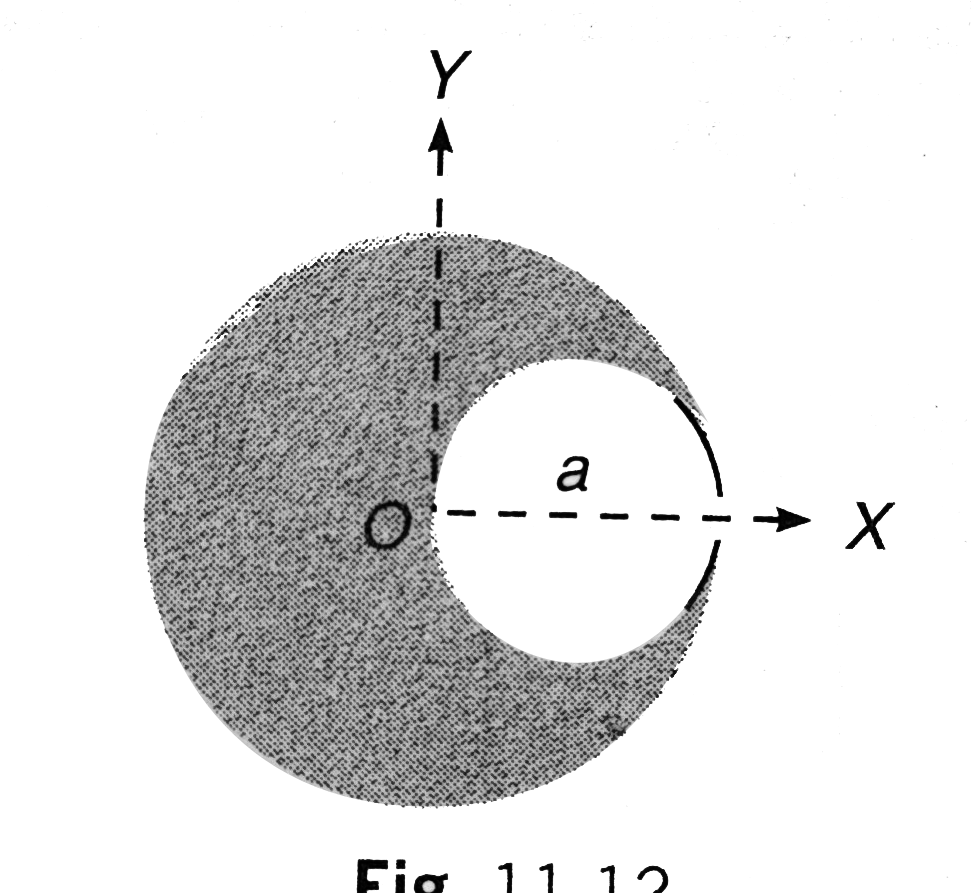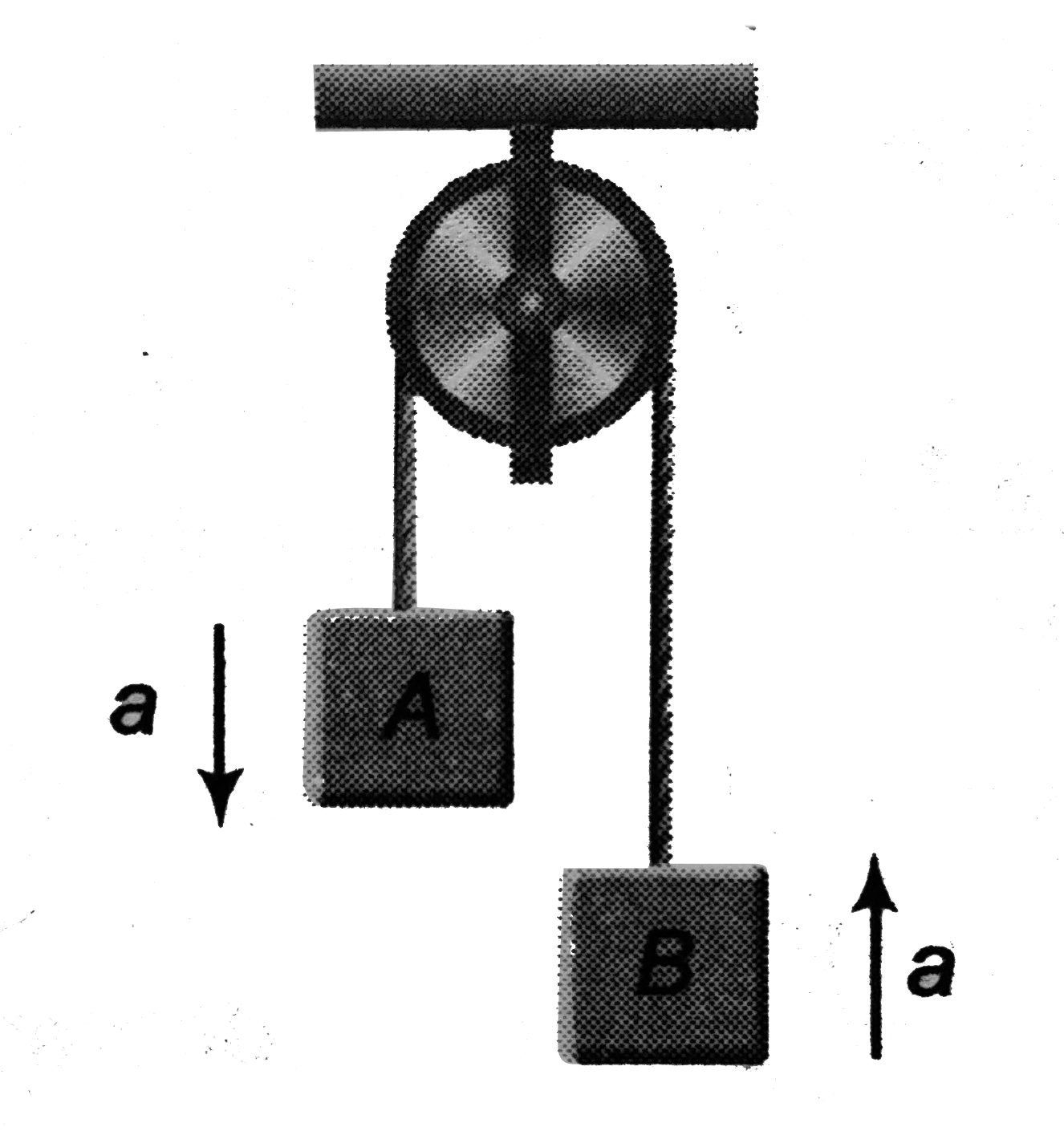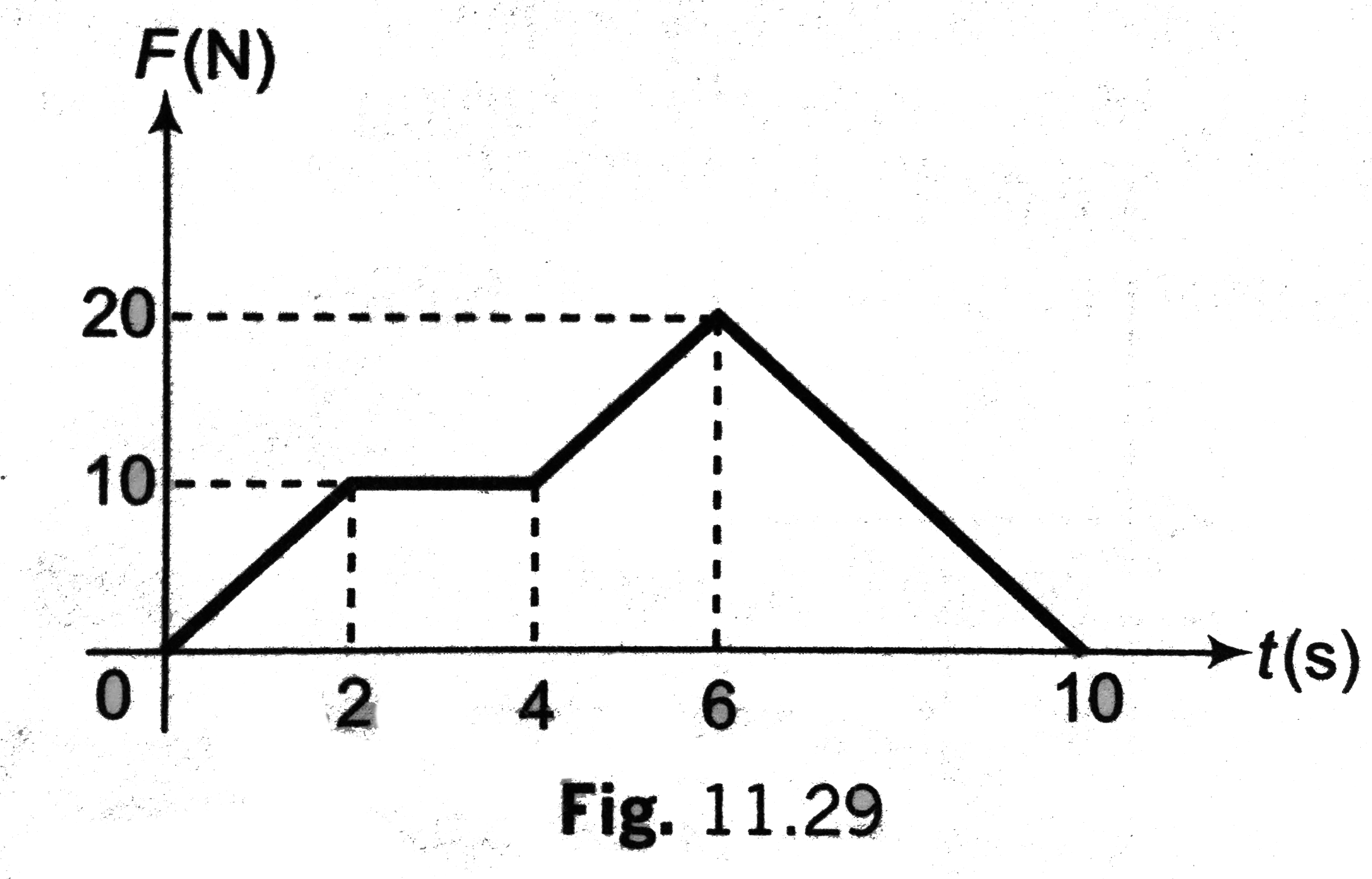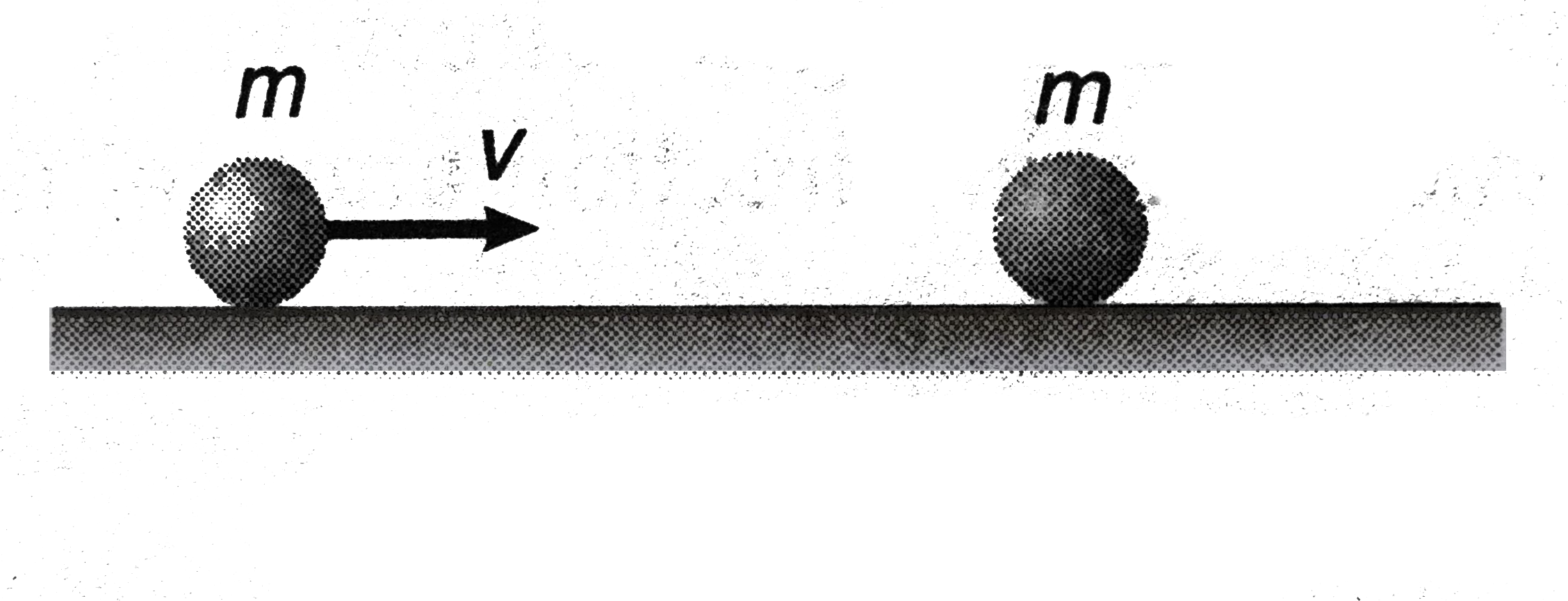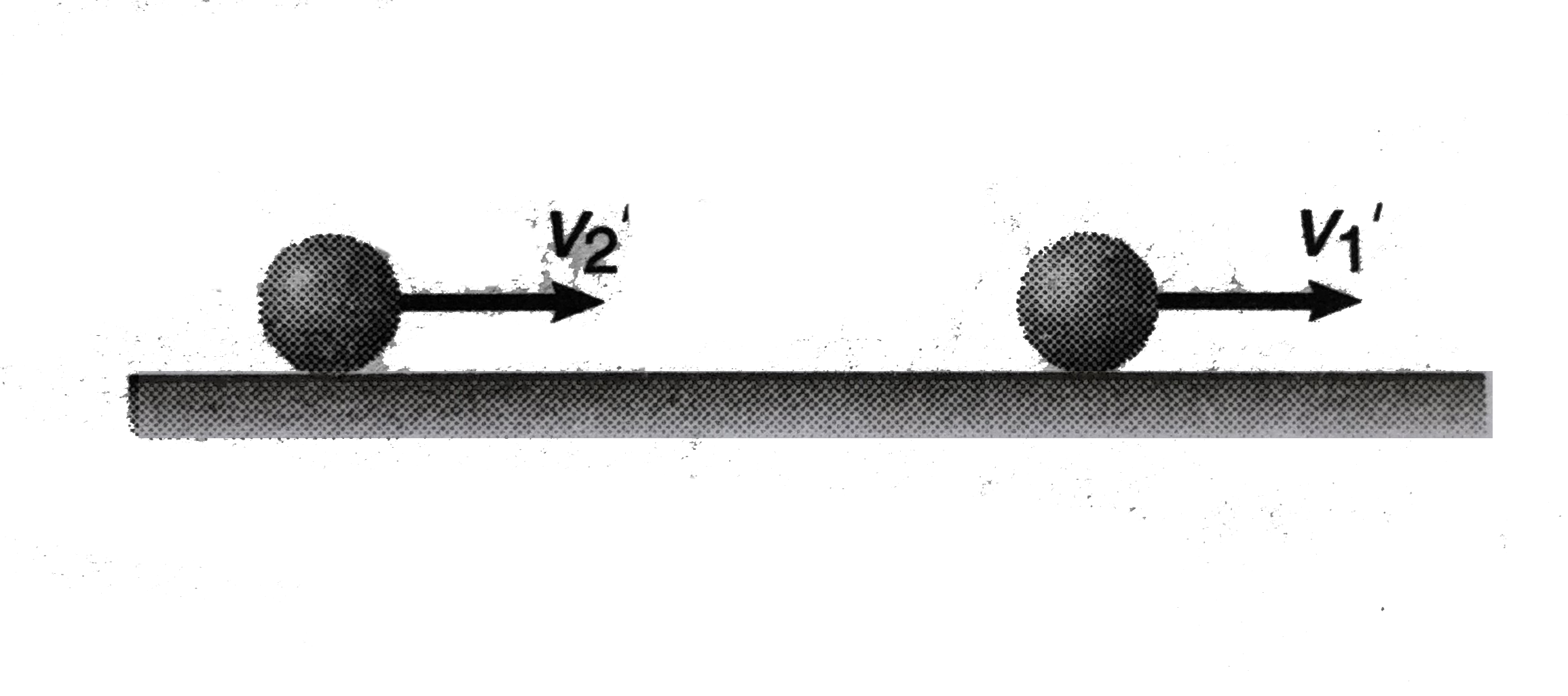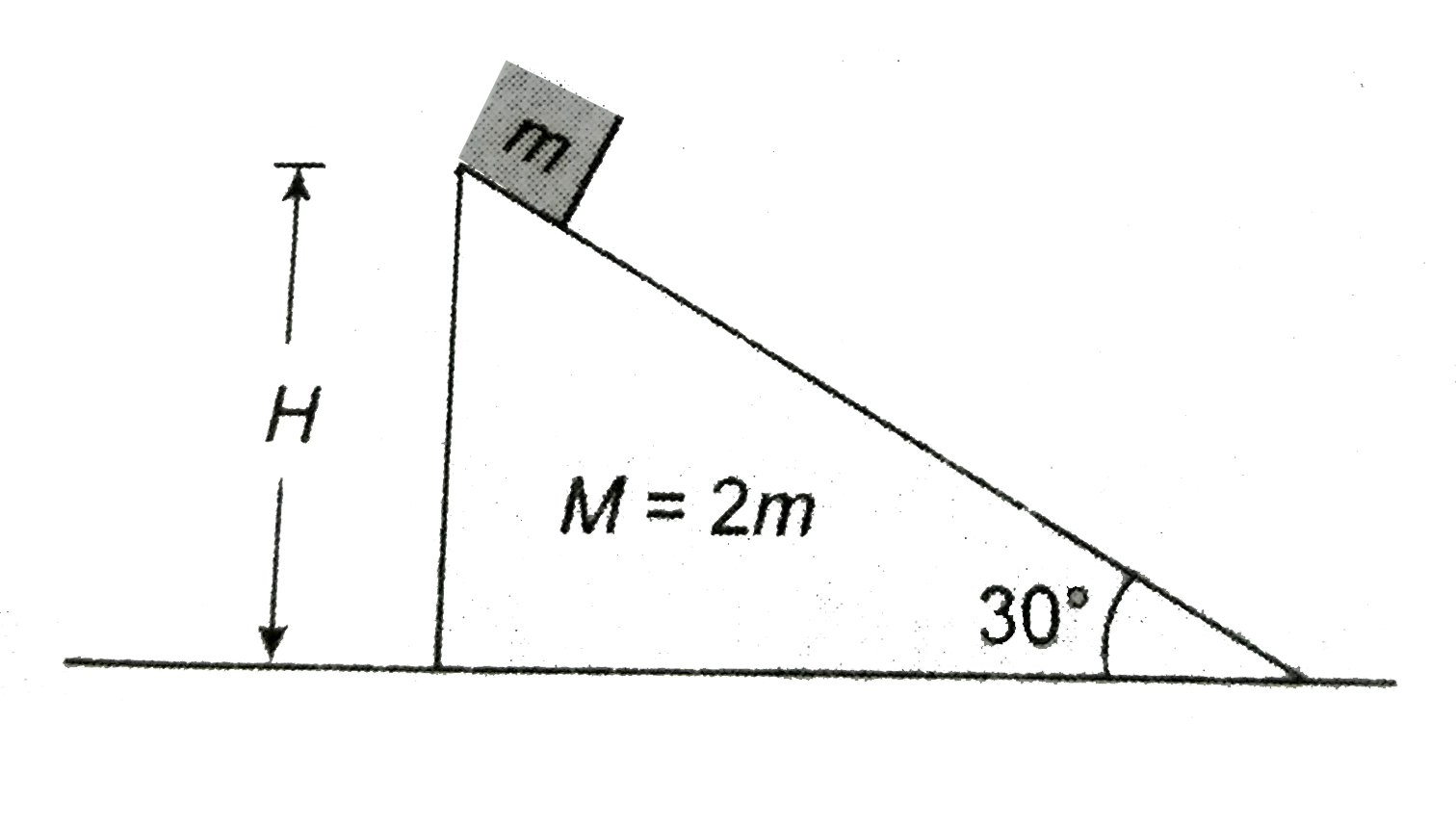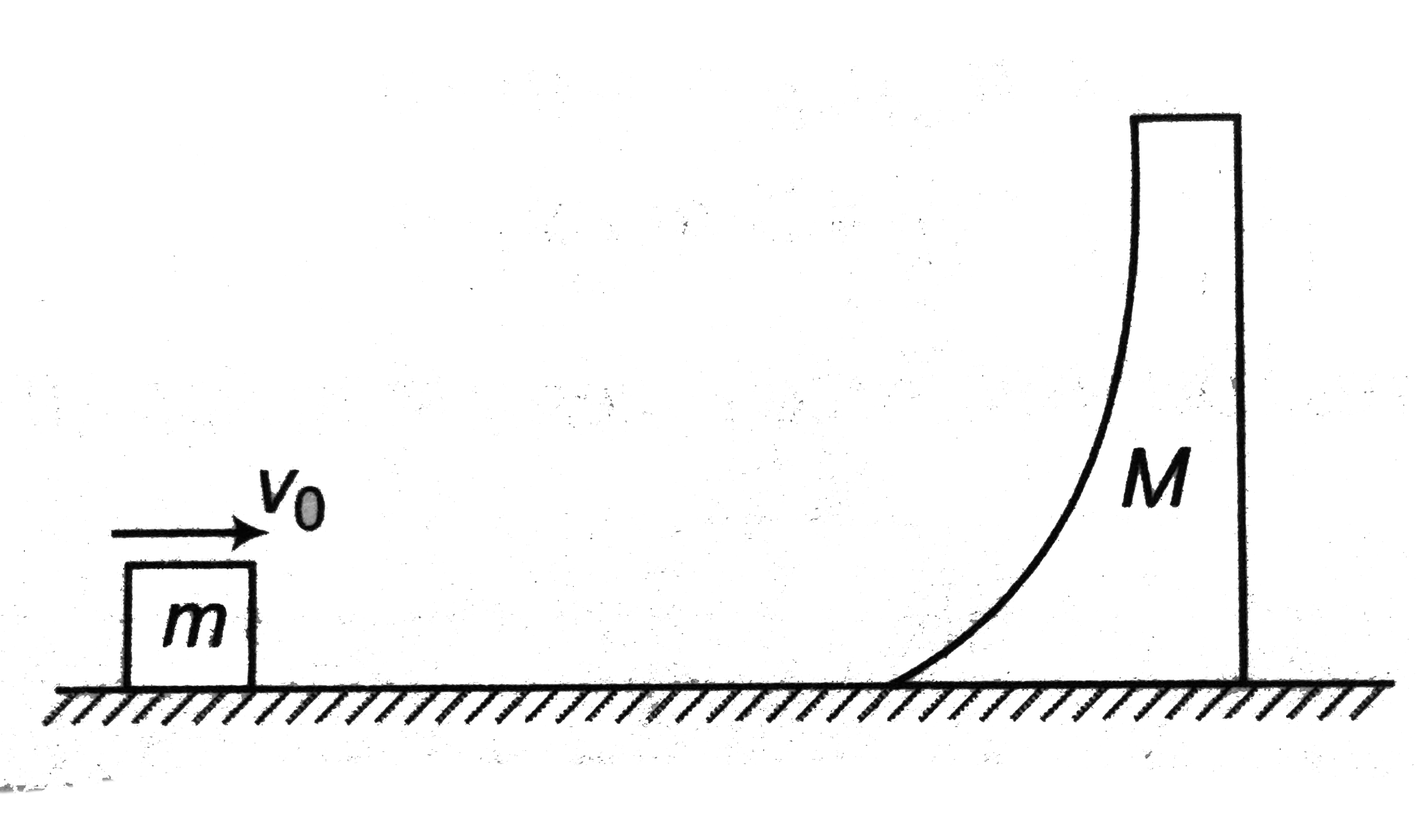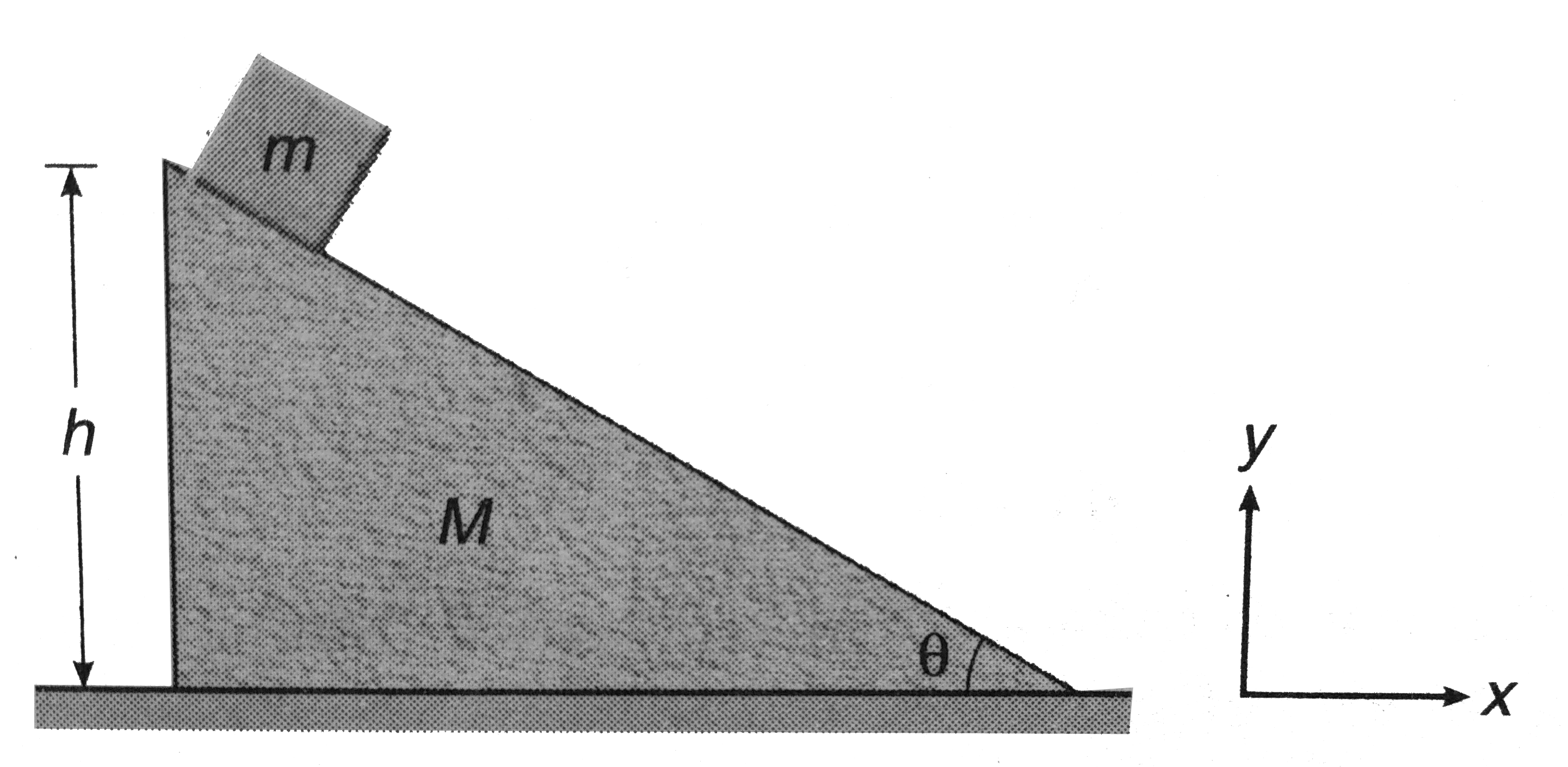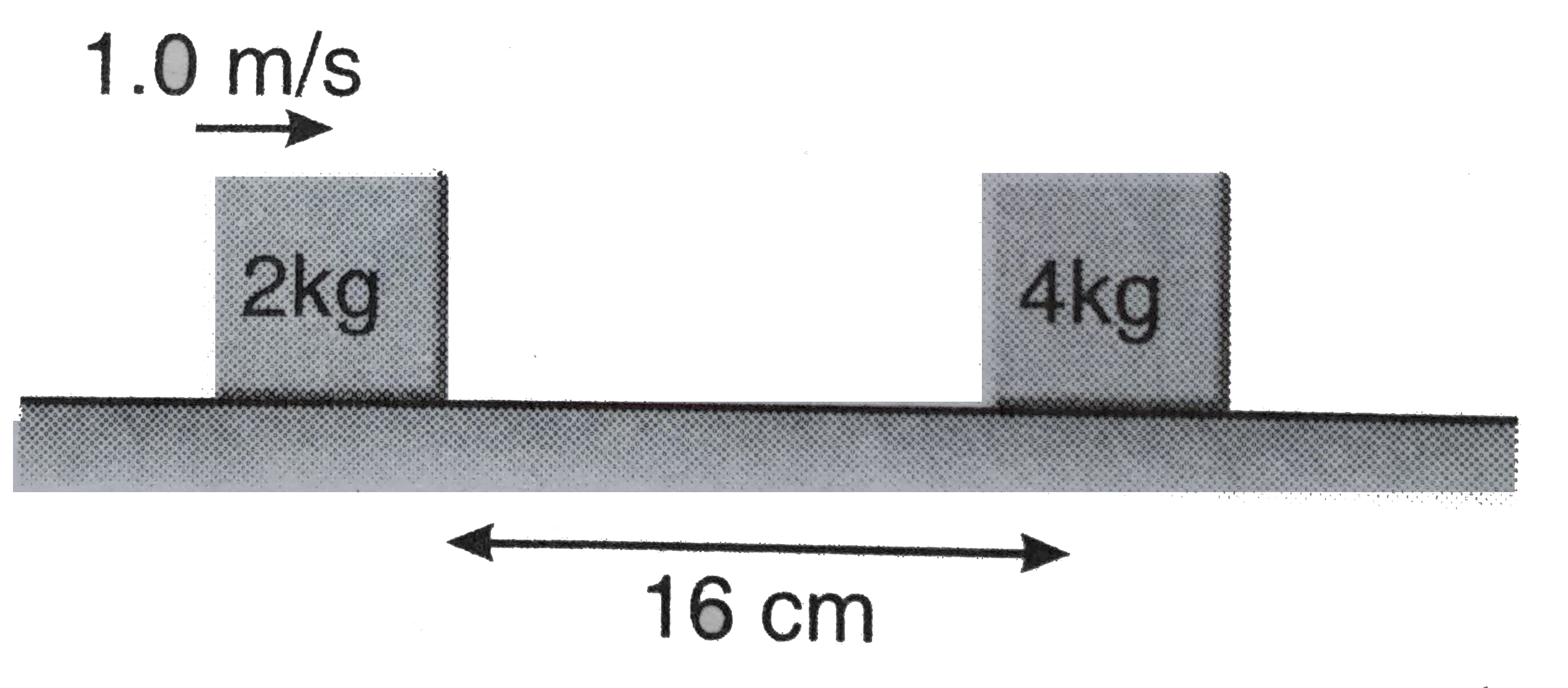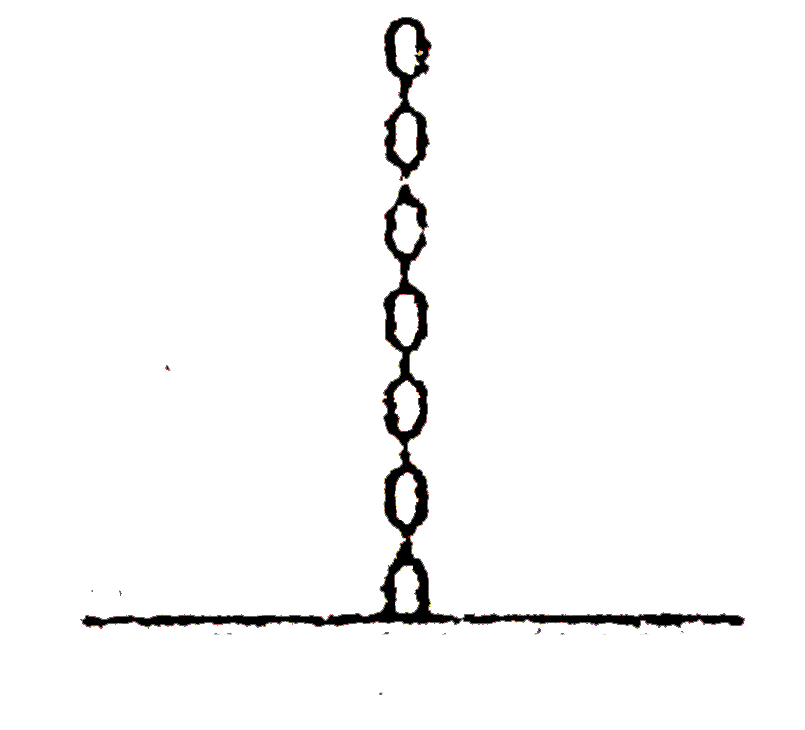MiscellaneousExamples from DC PANDEY PHYSICS (HINGLISH) CENTRE OF MASS, LINEAR MOMENTUM AND COLLISION for Class 11
| Class 11 | PHYSICS |
| Chapter | CENTRE OF MASS, LINEAR MOMENTUM AND COLLISION |
| DC PANDEY PHYSICS (HINGLISH) | MiscellaneousExamples |
| Medium | English |
| Academic Year | 2023-2024 |
Question 6
Two particles A and B of masses 1kg and 2kg respectively are projected in the directions shown in figure with speeds uA=200m/s and uB=50m/s. Initially they were 90m apart. They collide in mid air and stick with each other. Find the maximum height attained by the centre of mass of the particles. Assume acceleration due to gravity to be constant.
(g=10m/s2)
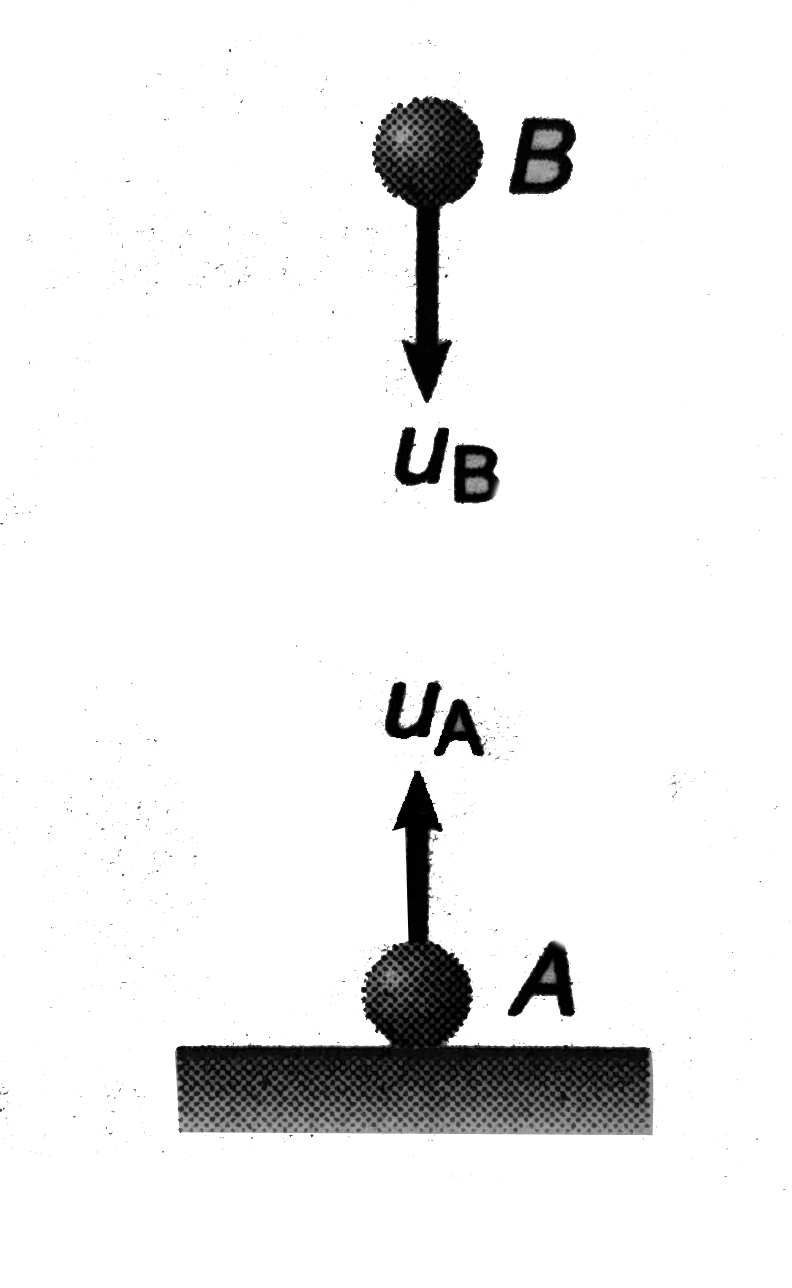 View Solution
View SolutionQuestion 11
Two blocks A and B of masses 1kg and 2kg are connected together by means of a spring and are resting on a horizontal frictionless table. The blocks are then pulled apart so as to stretch the spring and then released. Find the ratio of their,
(a) speed
(b) magnitude of momentum and
(c) kinetic energy at any instant.View SolutionQuestion 13
A projectile of mass 3m is projected from ground with velocity 20√2m/s at 45∘. At highest point it explodes into two pieces. One of mass 2m and the other of mass m. Both the pieces fly off horizontally in opposite directions. Mass 2m falls at a distance of 100m from point of projection. Find the distance of second mass from point of projection where it strikes the ground.
(g=10m/s2)View SolutionQuestion 14
(a) A rocket set for vertical firing weighs 50kg and contains 450kg of fuel. It can have a maximum exhaust velocity of 2km/s. What should be its minimum rate of fuel consumption
(i) to just lift off the launching pad?
(ii) to give it an initial acceleration of 20m/s2?
(b) What will be the speed of the rocket when the rate of consumption of fuel is 10kg/s after whole of the fuel is consumed? (Take g=9.8m/s2)View SolutionQuestion 26
The coefficient of restitution between a snooker ball and the side cushion is 13. If the ball hits the cushion and then rebounds at right angles to its original direction, show that the angles made with the side cushion by the direction of motion before and after impact are 60∘ and 30∘ respectively.View SolutionQuestion 27
A trolley of mass M is at rest over a smooth horizontal surface as shown in figure. Two boys each of mass 'm' are standing over the trolley. They jump from the trolley (towards right) with relative velocity vr [relative to velocity of trolley just after jumping]
(a) together
(b) one after the other.
Find velocity of trolley in both cases.
 View Solution
View SolutionQuestion 28
Two toy trains each of mass 'M' are moving in opposite directions with velocities v1 and v2 over two smooth rails. Two stuntmen of mass 'm' each are also moving with the trains (at rest w.r.t. trains). When trains are opposite to each other the stuntmen interchange their positions, then find the final velocities of the trains.View SolutionQuestion 31
A wooden plank of mass 20kg is resting on a smooth horizontal floor. A man of mass 60kg starts moving from one end of the plank to the other end. The length of the plank is 10m. Find the displacement of the plank over the floor when the man reaches the other end of the plank.
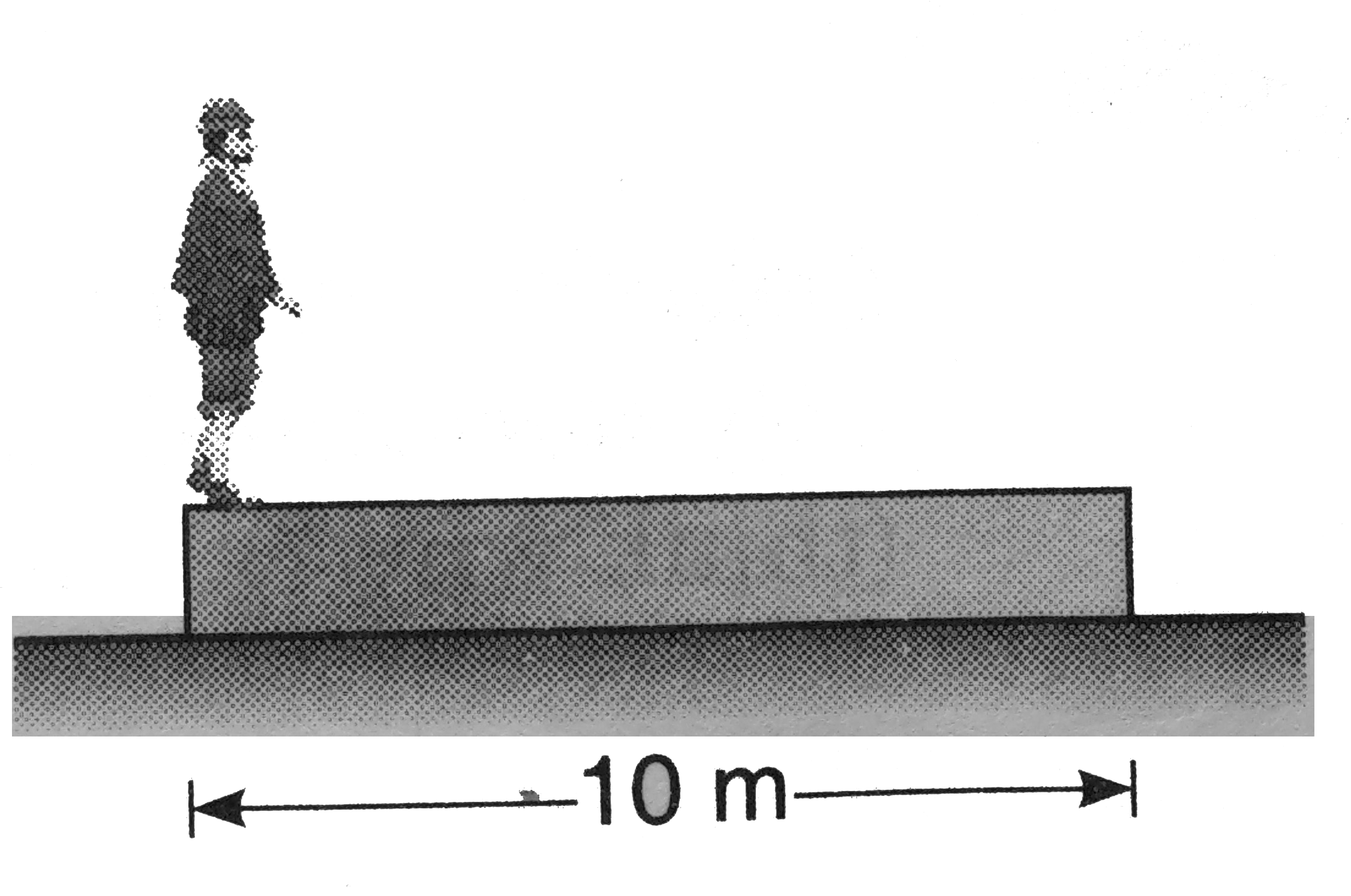 View Solution
View SolutionQuestion 35
A projectile of mass 3kg is projected with velocity 50m/s at 37∘ from horizontal. After 2s, explosion takes place and the projectile breaks into two parts of masses 1kg and 2kg. The first part comes to rest just after explosion.
Find,
(a) the velocity of second part just after explosion.
(b) maximum height attained by this part. Take g=10m/s2View SolutionQuestion 37
A trolley of initial mass m0 is kept over a smooth surface as shown in figure. A constant force F is applied on it. Sand kept inside the trolley drains out from its floor at a constant rate of (μ)kg/s. After time t find:
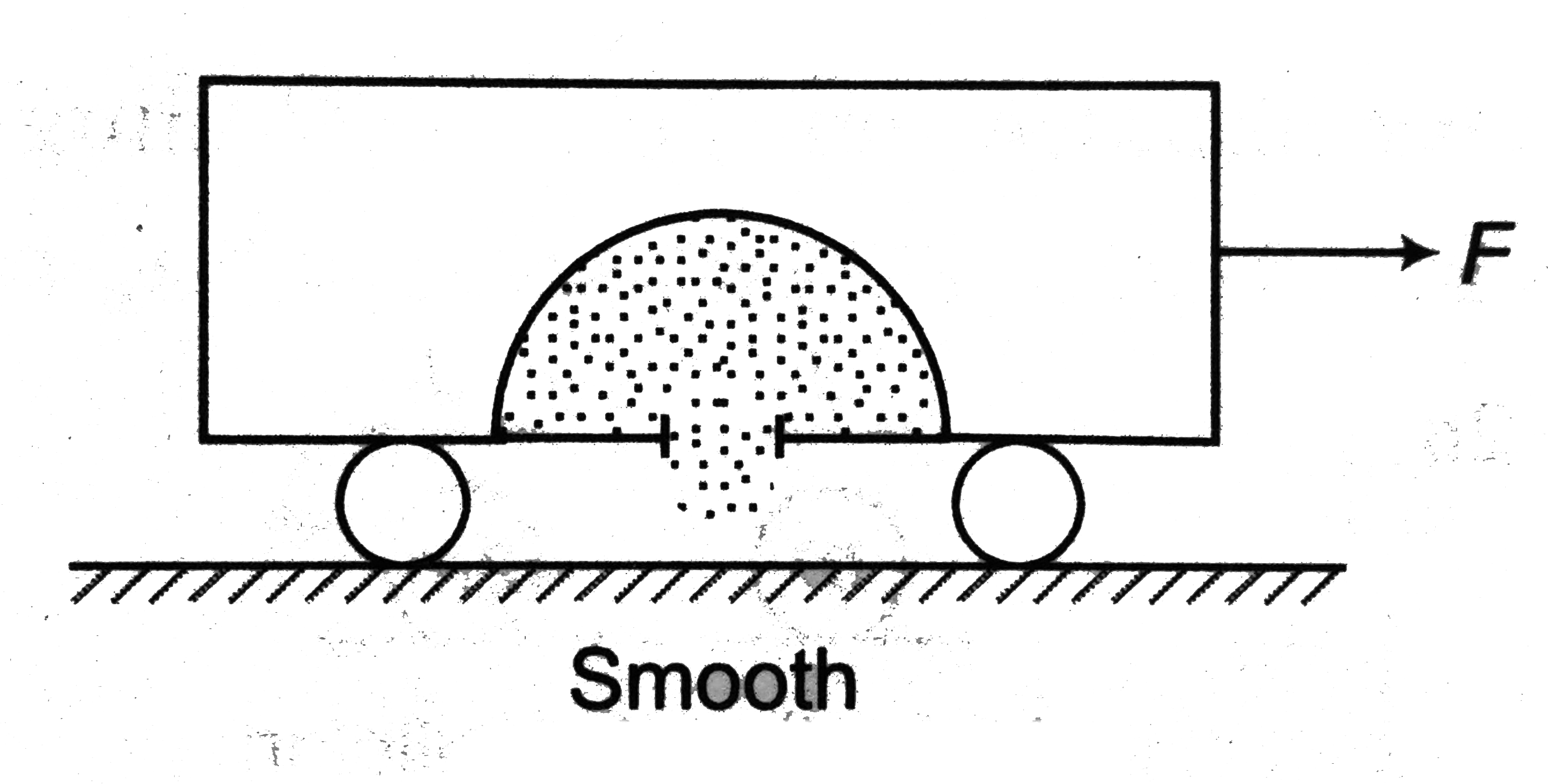
(a) total mass of trolley and sand.
(b) net force on the trolley.
(c) velocity of trolley.View SolutionQuestion 38
Two balls of masses m and 2m and momenta 4p and 2p (in the directions shown) collide as shown in figure. During collsion, the value of linear impulse between them is J. In terms of J and p find coefficient of restitution 'e'. Under what condition collision is elastic. Also find the condition of perfectly inelastic collision.
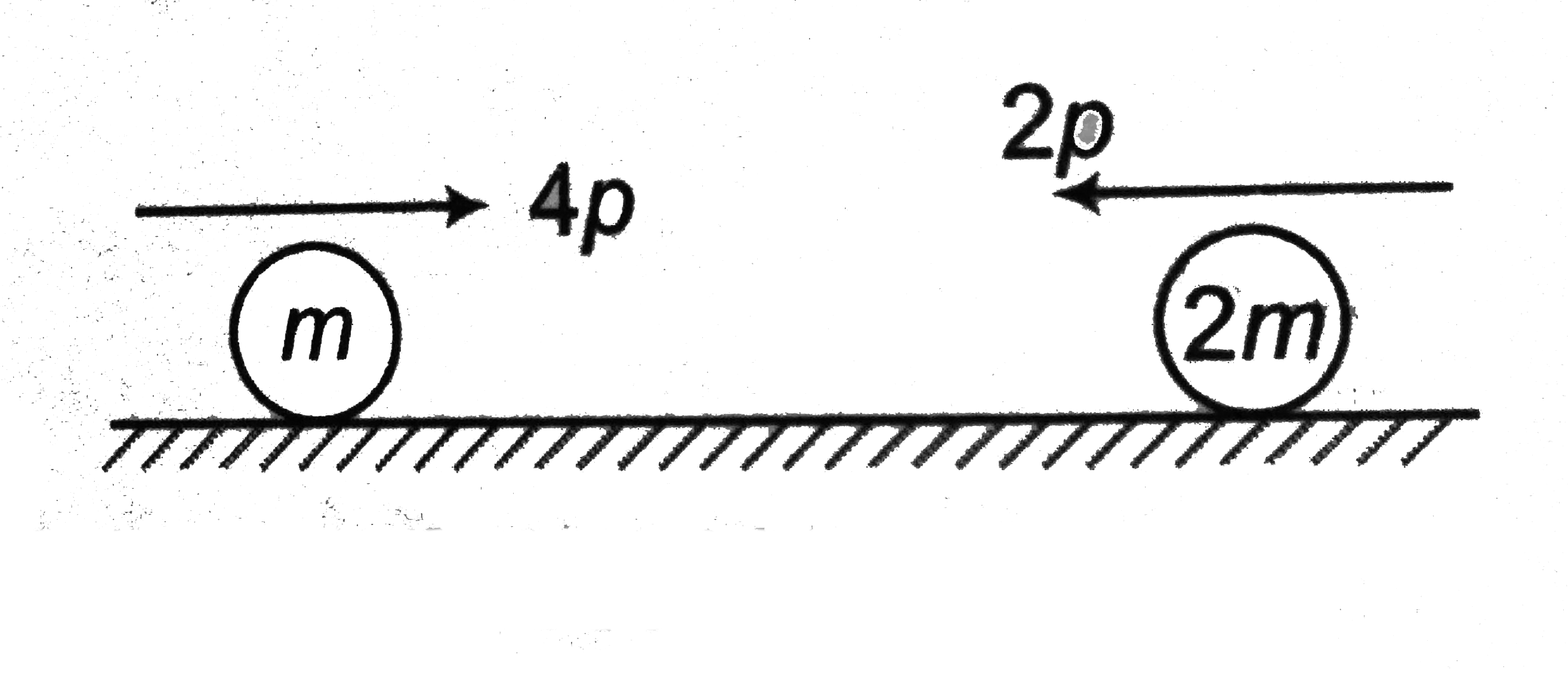 View Solution
View SolutionQuestion 42
Three identical balls, ball I, ball II and ball III are placed on a smooth floor on a straight line at the separation of 10m between balls as shown in figure. Initially balls are stationary. But I is given velocity of 10m/s towards ball II, collision between balls I and II is inelastic with coefficient of restitution 0.5 but collision between balls II and III is perfectly elastic. What is the time interval between two consecutive collisions between ball I and II?
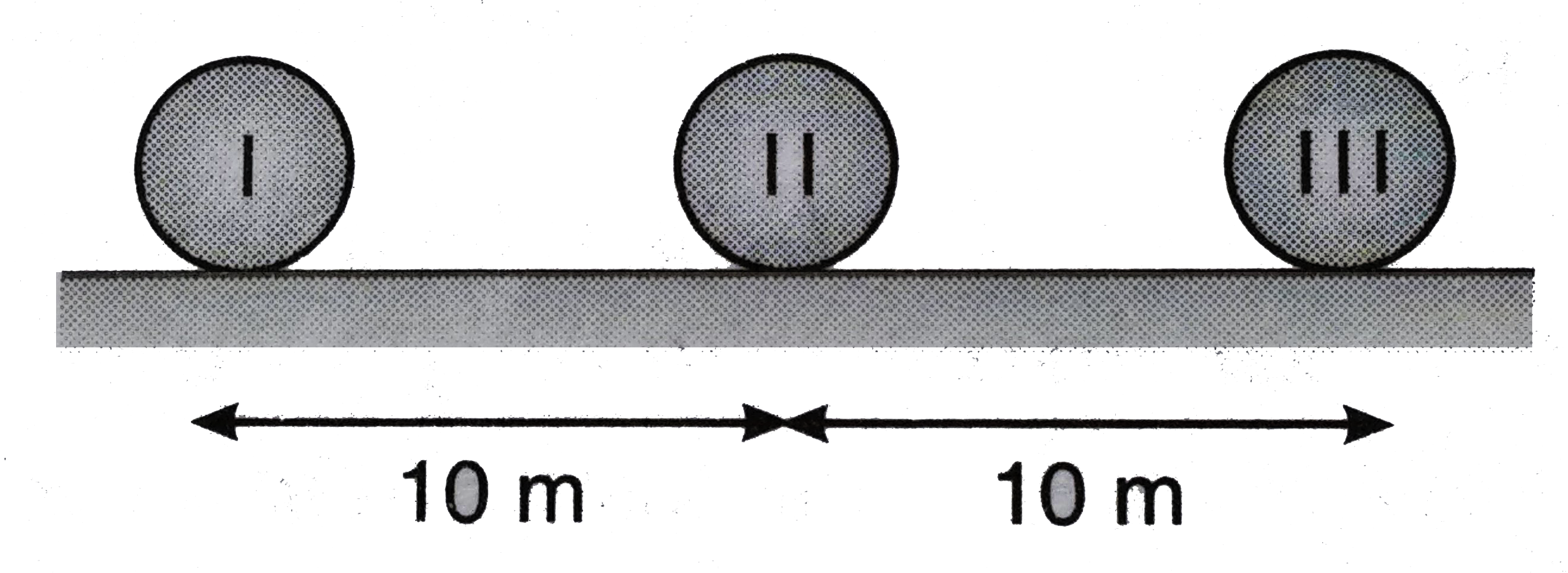 View Solution
View SolutionQuestion 43
A planck of mass 5kg is placed on a frictionless horizontal plane. Further a block of mass 1kg is placed over the plank. A massless spring of natural length 2m is fixed to the plank by its one end. The other end of spring is compressed by the block by half of spring's natural length. They system is now released from the rest. What is the velocity of the plank when block leaves the plank? (The stiffness constant of spring is 100N/m)
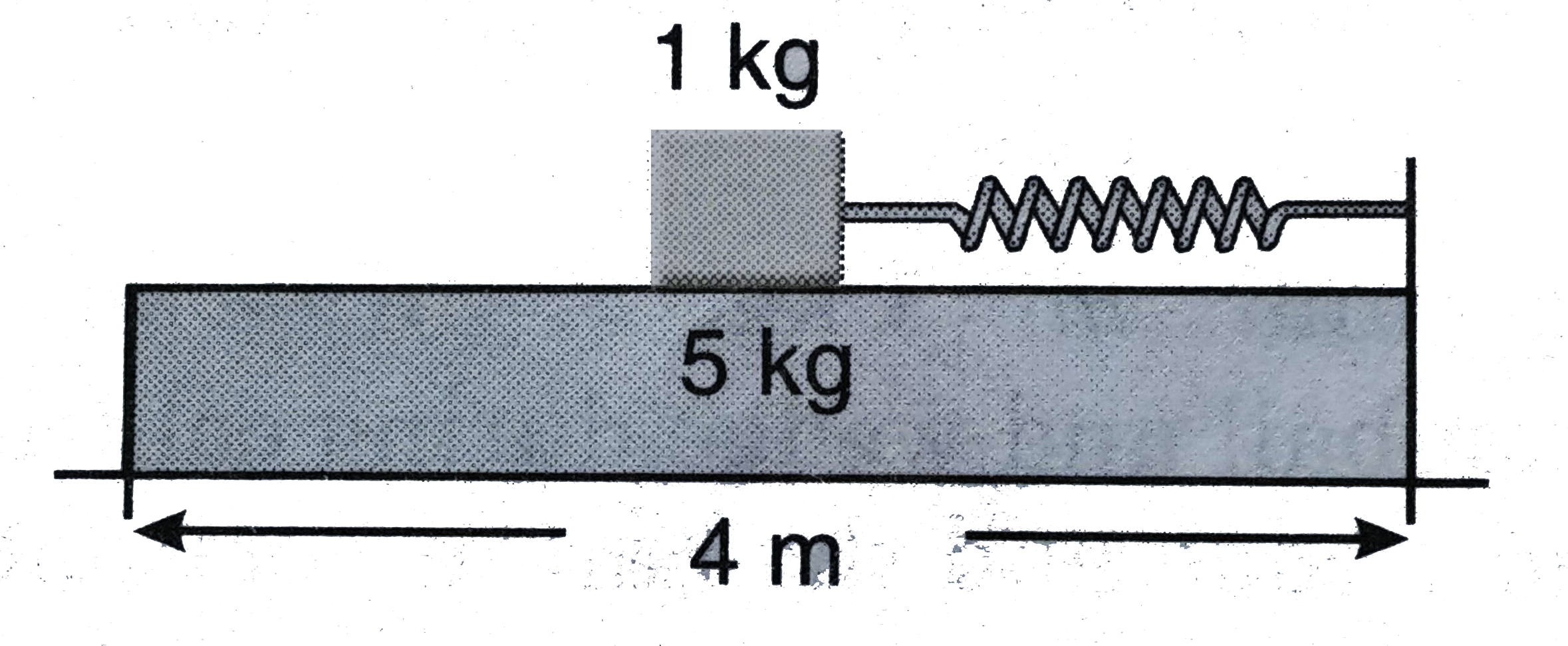 View Solution
View SolutionQuestion 45
A ball of mass m=1kg falling vertically with a velocity v0=2m/s strikes a wedge of mass M=2kg kept on a smooth, horizontal surface as shown in figure. If impulse between ball and wedge during collision is J. Then make two equations which relate J with velocity components of wedge and ball. Also find impulse on wedges from ground during impact.
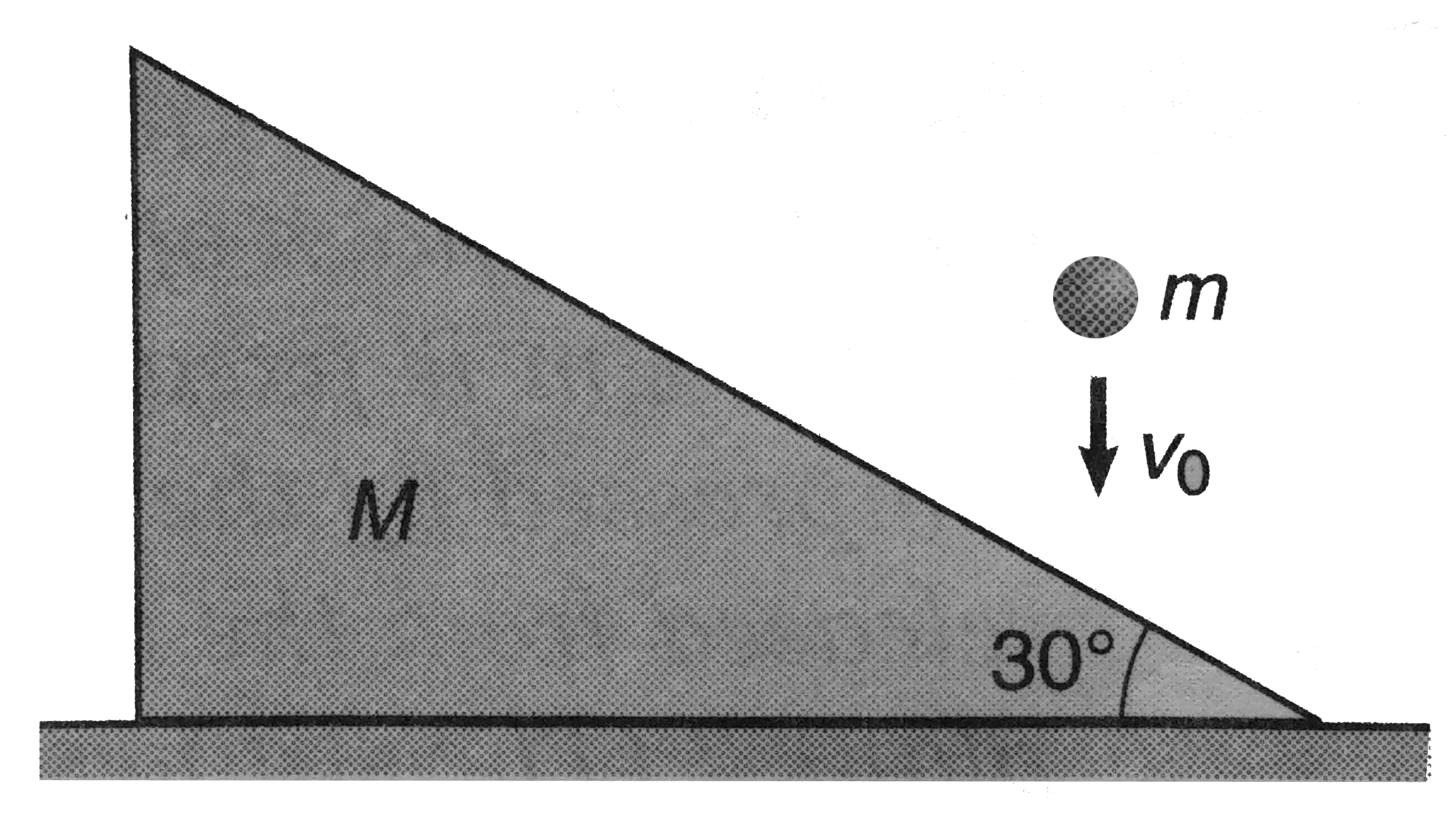 View Solution
View SolutionQuestion 46
Two blocks of equal mass m are connected by an unstretched spring and the system is kept at rest on a frictionless horizontal surface. A constant force F is applied on one of the blocks pulling it away from the other as shown in figure. (a) Find the displacement of the centre of mass at time t. (b) If the extension of the spring is x0 at time t, find the displacement of the two blocks at this instant.
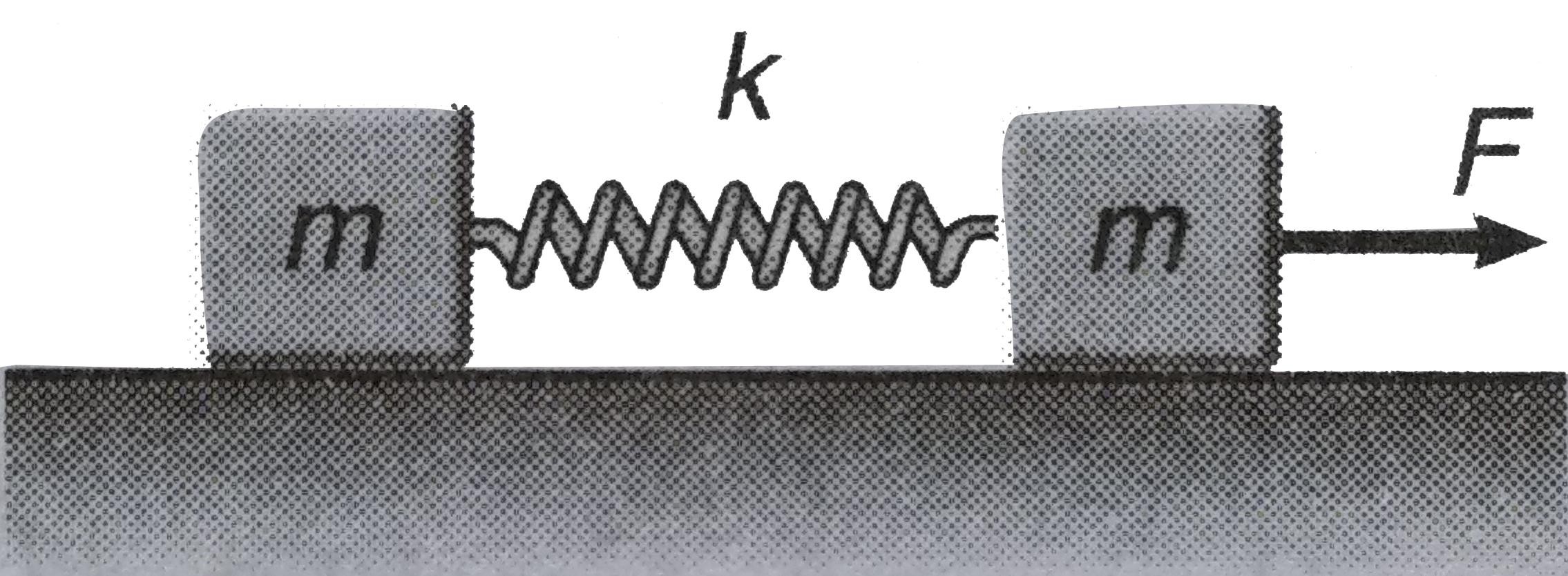 View Solution
View SolutionQuestion 47
A block of mass m is connect to another block of mass M by a massless spring of spring constant k. The blocks are kept on a smooth horizontal plane. Initially the blocks are at rest and the spring is unstretched when a constant force F starts acting on the block of mass M to pull it. Find the maximum extension of the spring.
 View Solution
View SolutionQuestion 48
Two blocks A and B of masses m and 2m respectively are placed on a smooth floor. They are connected by a spring. A third block C of mass m moves with a velocity v0 along the line joing A and B and collides elastically with A, as shown in figure. At a certain instant of time t0 after collision, it is found that the instantaneous velocities of A and B are the same. Further, at this instant the compression of the spring is found to be x0. Determine (i) the common velocity of A and B at time t0, and (ii) the spring constant.
 View Solution
View Solution
All Exercises from DC PANDEY PHYSICS (HINGLISH) Class 11 PHYSICS CENTRE OF MASS, LINEAR MOMENTUM AND COLLISION
- EXERCISE 11.1
- EXERCISE 11.2
- EXERCISE 11.3
- EXERCISE 11.4
- EXERCISE 11.5
- EXERCISE 11.6
- LEVEL 1 ASSERTION AND REASON
- LEVEL 1 OBJECTIVE
- LEVEL 1 SUBJECTIVE
- LEVEL 1 SUBJECTIVE QUESTIONS
- LEVEL 2 COMPREHENSION BASED
- LEVEL 2 COMPREHENSION BASED QUESTIONS
- LEVEL 2 MORE THAN ONE CORRECT
- LEVEL 2 SINGLE CORRECT
- LEVEL 2 SINGLE CORRECT OPTION
- LEVEL 2 SUBJECTIVE
- EXAMPLE
- MISCELLANEOUSEXAMPLES
- SOLVED EXAMPLES
- TYPE 1
